How to Reduce Muscle Soreness After Workout: 5 Effective Ways to Ease Post-Workout Muscles
How can you reduce muscle soreness after a workout. Discover 5 proven ways to ease post-workout muscle pain and speed up recovery.
Decoding Muscle Soreness: Immediate vs Delayed Onset
Muscle soreness after a workout can be of two types: acute muscle soreness and delayed onset muscle soreness (DOMS). Acute muscle soreness is the burning pain experienced during or immediately after intense exercise, caused by the buildup of metabolites in the muscles. This type of soreness dissipates quickly.
DOMS, on the other hand, is the pain and stiffness felt the day after a workout. This is caused by microscopic tears in the muscle fibers and surrounding connective tissues during exercise, especially when you use your muscles in a way they are not accustomed to, such as during a new or more intense workout.
Embracing the Discomfort: Why Muscle Soreness is Not All Bad
While muscle soreness can be uncomfortable, there is some truth to the saying “no pain, no gain.” Gradually increasing the intensity of your workouts can help reduce muscle soreness over time, as your body adapts to the demands.

Instead of letting the pain discourage you, view it as a sign that you are challenging yourself and taking care of your body. The more consistent you are with your workouts, the easier it will become to manage post-workout muscle soreness.
Avoiding Risky Pain Relief: Steer Clear of NSAIDs
If you need to take something to alleviate the pain, it’s best to avoid non-steroidal anti-inflammatory drugs (NSAIDs) like ibuprofen. While these drugs can help reduce inflammation, their effects on muscle soreness are unclear, and they come with risks, such as an increased risk of gastrointestinal bleeding, heart attack, and stroke, even at low doses.
Instead, research suggests that acetaminophen (Tylenol) may be a safer option for managing muscle soreness.
Nutrition for Recovery: Anti-Inflammatory Foods to the Rescue
Certain nutrient-rich foods may help alleviate muscle soreness and speed up recovery. These include:
- Watermelon, which is rich in the amino acid L-citrulline, shown to reduce heart rate during recovery and ease muscle soreness.
- Tart cherry juice, pineapple, and ginger, which have anti-inflammatory properties.
- Turmeric, containing the compound curcumin, which has powerful anti-inflammatory and antioxidant effects, helping to reduce DOMS and accelerate recovery.
- Omega-3 fatty acids from sources like fish oil, which may also have similar benefits.
- Milk protein concentrates, which have been found to help reduce muscle soreness and strength loss after exercise-induced muscle damage.
Natural Remedies: Arnica and Thermal Therapy
In addition to dietary strategies, natural remedies like arnica and thermal therapy can also help ease muscle soreness:
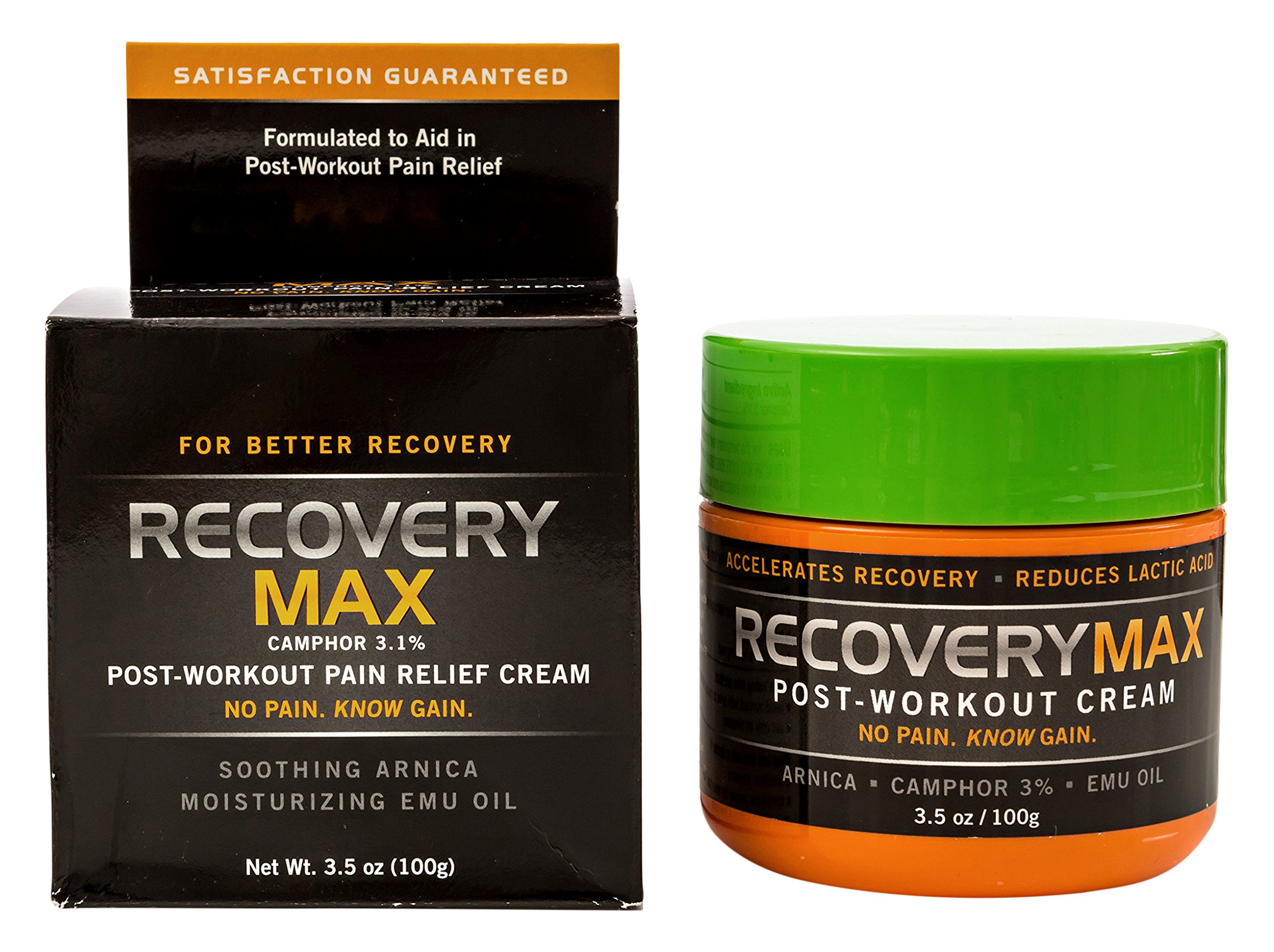
- Arnica, derived from the Arnica montana flower, has been used for years as a natural treatment for muscle pain and inflammation. Research suggests that topical arnica creams and ointments can effectively reduce pain and swelling from intense eccentric exercise.
- Applying heat, especially moist heat, immediately after a workout can help alleviate delayed onset muscle soreness. Warm, damp towels, heating pads, and warm baths are effective ways to deliver this therapeutic heat.
- Epsom salt baths are also believed to help reduce muscle pain and inflammation, with the added benefit of the moist heat from the bath.
Chill Out: The Benefits of Cold Therapy
While heat therapy can be soothing, cold therapy may also help reduce muscle soreness and inflammation. Applying ice packs or taking a cold bath after a workout can help constrict blood vessels, decrease swelling, and reduce nerve activity, leading to pain relief.
Just be sure to never apply ice directly to the skin, as this can cause damage. Wrap the ice pack in a towel or use a cold water immersion instead.
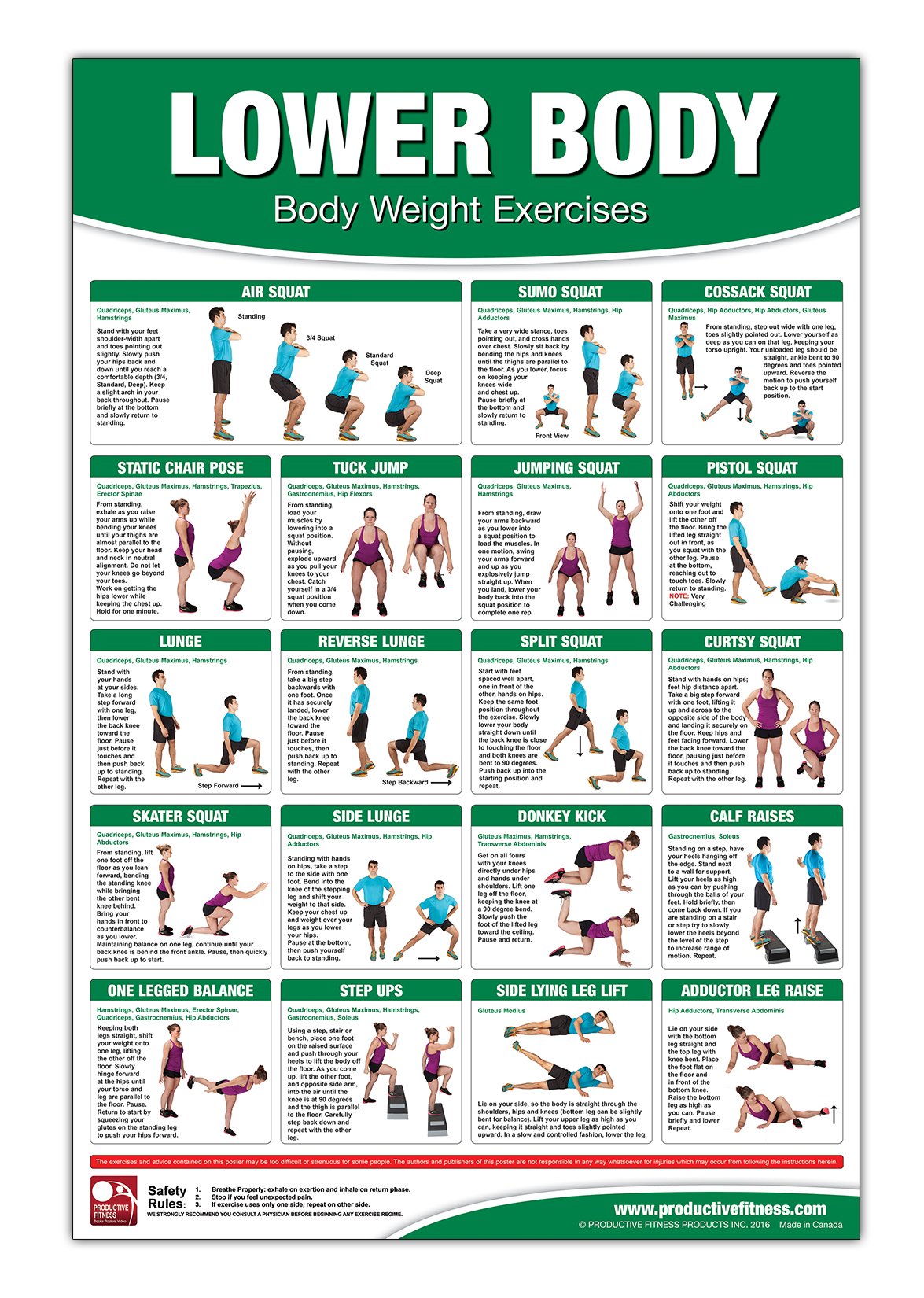
Self-Myofascial Release: The Power of Foam Rolling
Foam rolling, or self-myofascial release, is a form of self-massage that can help alleviate muscle soreness and fatigue, as well as improve flexibility. By slowly rolling the sore muscle over the foam roller, you can help break up adhesions and knots, promoting blood flow and relaxation.
You can find foam rollers at most fitness stores or online, and there are many instructional videos available to guide you through the proper techniques for different muscle groups.
In conclusion, while muscle soreness is a common side effect of exercise, there are numerous strategies you can employ to ease the discomfort and speed up your recovery. By incorporating a combination of dietary, natural, and self-care techniques, you can maximize your post-workout comfort and continue progressing towards your fitness goals.
23 вещи, которые нужно знать: от советов по облегчению до профилактики доходит до мышечной болезненности, существует два типа:
- острая мышечная болезненность
, также называемая немедленной мышечной болезненностью - отсроченное начало
мышечная болезненность (DOMS)
Это часто описывается как жгучая боль. Это вызвано накоплением метаболитов в мышцах во время упражнений высокой интенсивности. Этот тип мышечной боли проходит быстро.
Это боль и скованность, которые вы чувствуете на следующий день после тренировки. Это происходит из-за микроскопических разрывов мышечных волокон и окружающих соединительных тканей во время упражнений.
Обычно это происходит после того, как вы используете свои мышцы не так, как они привыкли, например, во время новой или более интенсивной тренировки.
В поговорке «нет боли — нет выгоды» есть доля правды. Постепенно увеличивая интенсивность тренировок, можно уменьшить болезненность мышц.
Как бы неудобно это ни было, не позволяйте боли сломить вас! Вы заботитесь о себе — чем дольше вы этим занимаетесь, тем легче это будет становиться.
Болезненность мышц уменьшается по мере того, как ваше тело привыкает к упражнениям. Если вам нужно принять что-то, чтобы облегчить боль, откажитесь от нестероидных противовоспалительных препаратов (НПВП).
Почему? Ну, неясно, влияют ли НПВП на болезненность мышц, несмотря на то, что они противовоспалительные. И даже при приеме в низких дозах НПВП могут увеличить риск желудочно-кишечного кровотечения, сердечного приступа и инсульта.
Новые исследования показывают, что ацетаминофен (тайленол) может быть полезен.
Поделиться на Pinterest
Хотя необходимы дополнительные исследования, некоторые данные свидетельствуют о том, что вы можете избавиться от боли в мышцах, употребляя продукты, богатые антиоксидантами.
Арбуз, например, богат аминокислотой под названием L-цитруллин. Исследования, проведенные в 2013 и 2017 годах, показывают, что эта аминокислота может снизить частоту сердечных сокращений после восстановления и болезненность мышц.
Другие противовоспалительные пищевые продукты, показавшие себя многообещающими в лечении мышечной боли:
- вишневый сок
- ананас
- имбирь
Куркумин — это соединение, содержащееся в куркуме. Он богат антиоксидантами и обладает мощным противовоспалительным действием, поэтому неудивительно, что он уменьшает боль при отсроченной болезненности мышц и ускоряет восстановление после тренировки.
Рыбий жир и другие омега-3 жирные кислоты могут иметь аналогичные преимущества.
Одно исследование, проведенное в 2017 году, показало, что добавки с молочным белком могут помочь уменьшить мышечную болезненность и силу при мышечной травме, вызванной физической нагрузкой.
Концентрат молочного белка представляет собой концентрированный молочный продукт, содержащий от 40 до 90 процентов молочного белка. Он используется в продуктах и напитках, обогащенных белком, но его также можно купить в порошкообразной форме в магазинах здоровой пищи.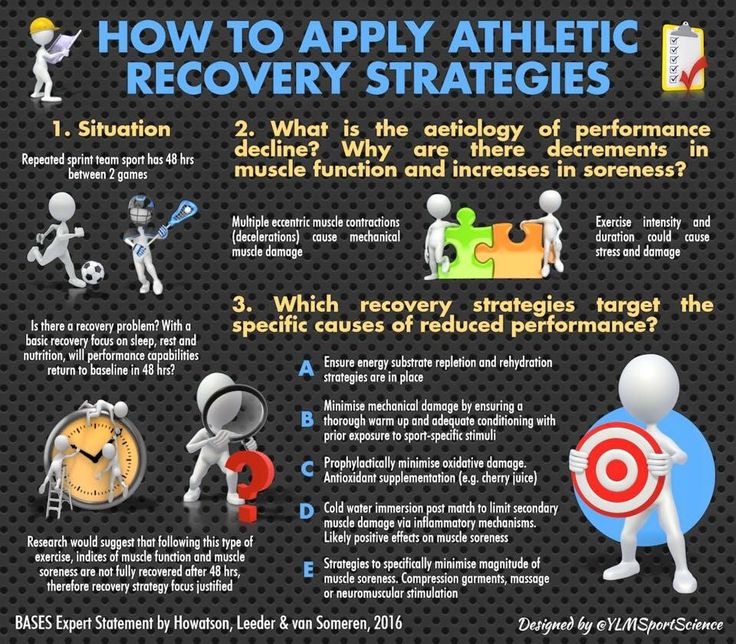
Арника уже много лет используется как естественное средство от мышечной боли. Он получен из цветка Arnica montana, , который встречается в горах Сибири и Европы.
Хотя необходимы дополнительные исследования, одно исследование 2013 года показало, что кремы и мази для местного применения, содержащие арнику, эффективно снимают боль и воспаление, вызванные интенсивными эксцентрическими упражнениями.
Прикладывание тепла сразу после тренировки может уменьшить отсроченную болезненность мышц. Одно исследование 2013 года показало, что, хотя и сухое, и влажное тепло помогают при боли, влажное тепло обеспечивает еще большее уменьшение боли.
Отличные способы насладиться терапией влажной теплотой после тренировки включают:
- теплые влажные полотенца
- влажные согревающие компрессы
- теплую
ванну
Купание в солях Эпсома связано с уменьшением мышечной боли и воспаления. Влажное тепло, которое вы получаете, сидя в горячей ванне, является дополнительным бонусом.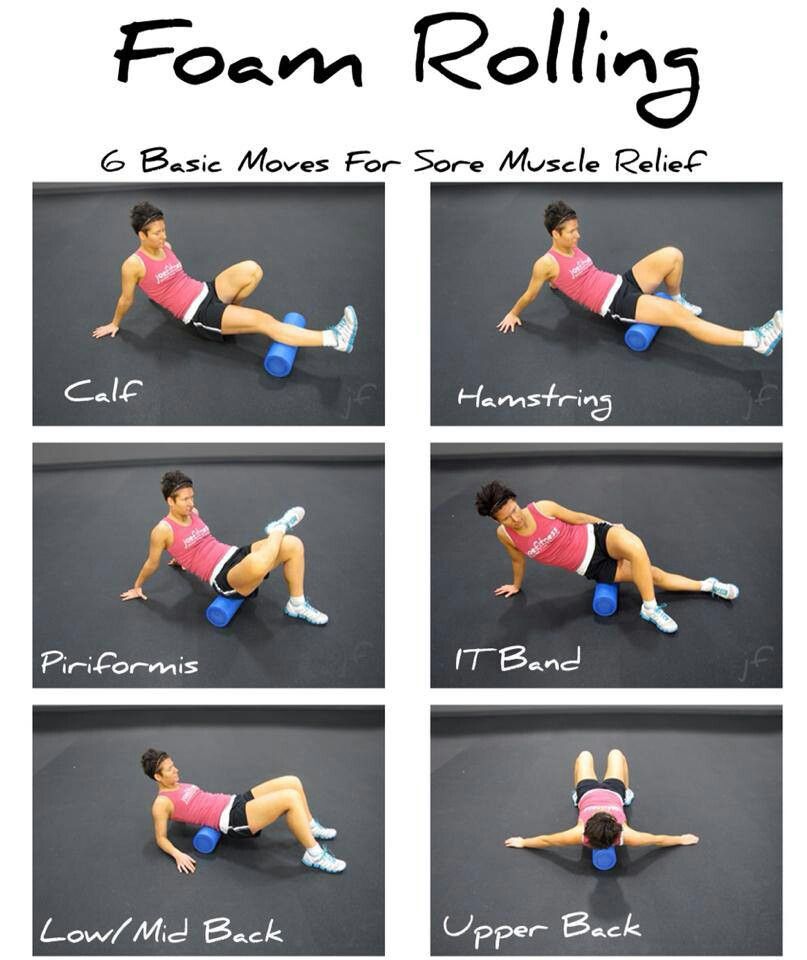
Поделиться на Pinterest
Говорят, что холодовая терапия облегчает боль в мышцах и суставах за счет уменьшения отека и нервной активности. Вы можете прикладывать холод, используя пакет со льдом или пакет с замороженными овощами, но холодная ванна может быть более полезной. (Только помните, никогда не прикладывайте лед непосредственно к коже!)
Прокатывание пеной — это, по сути, форма самомассажа. Исследования показали, что ролики с пеной могут уменьшить отсроченную болезненность мышц. Это также может помочь при мышечной усталости и гибкости.
Ролики из пеноматериала можно приобрести везде, где вы покупаете тренажеры.
Для пенного валика вы кладете валик на пол под воспаленную мышцу и медленно перекатываете по нему тело. Вы можете поискать в Интернете видео о том, как выполнять пенопластовый валик для разных групп мышц.
Массаж не только расслабляет, массаж также облегчает DOMS и улучшает работу мышц. Результаты одного исследования 2017 года показывают, что массаж наиболее эффективен, если его выполнять через 48 часов после тренировки.
Ношение компрессионного белья в течение 24 часов после тренировки может уменьшить DOMS и ускорить восстановление функции мышц. Компрессионное белье удерживает мышцы на месте и увеличивает приток крови для более быстрого восстановления.
Вы можете приобрести компрессионное белье для большинства групп мышц. Типы компрессионного белья включают рукава, носки и леггинсы.
Не позволяйте боли в мышцах помешать вам заниматься спортом. Болезненность мышц — это естественный процесс, который помогает вашему телу привыкнуть к упражнениям. Как только вы вызовете эту болезненность, она не повторится, если вы не увеличите интенсивность.
Если боль сильная, тренируйтесь с меньшей интенсивностью или переключитесь на другую группу мышц на день или два.
Мы часто слышим, что растяжка до и после тренировки может помочь предотвратить травмы и боль, но исследования на самом деле говорят об обратном.
Одно исследование, проведенное в 2011 году, показало, что растяжка практически не влияет на болезненность мышц после тренировки.
Поделиться на Pinterest
Исследование, проведенное в 2012 году, показало, что статическая растяжка может снижать мышечную работоспособность. Статическая растяжка включает в себя растяжение мышцы до точки минимального дискомфорта и удержание ее в течение определенного периода времени.
Вместо этого выберите динамическую растяжку, при которой вы постоянно двигаете мышцами и суставами. Шагающие выпады и круговые движения руками — отличное начало.
Динамическая растяжка подготавливает ваше тело за счет увеличения частоты сердечных сокращений, улучшения кровотока и повышения гибкости.
Заминка после тренировки помогает нормализовать дыхание и частоту сердечных сокращений.
Он также может помочь сохранить приток крови к тренируемым мышцам, что может помочь процессу восстановления и потенциально улучшить отсроченную болезненность мышц. Охладитесь ходьбой или ездой на велотренажере в течение 5 или 10 минут.
Болезненность мышц возникает у начинающих и подготовленных спортсменов. Это естественная адаптивная реакция на новую активность или увеличение интенсивности или продолжительности.
Это естественная адаптивная реакция на новую активность или увеличение интенсивности или продолжительности.
Вы все еще можете ощущать острую боль в мышцах после упражнений, но со временем состояние DOMS улучшится, и ваше тело адаптируется к вашим тренировкам.
Помнить о своем теле и тренировках — лучший способ предотвратить болезненные ощущения в будущем и получить максимальную отдачу от упражнений.
Подготовьте свое тело к тренировке, каждый раз выполняя адекватную разминку и заминку. Изучите правильную технику и придерживайтесь режима, который постепенно увеличивает интенсивность и продолжительность, чтобы уменьшить болезненность и снизить риск получения травмы.
Умеренные дозы кофеина могут уменьшить боль после тренировки почти на 50 процентов, так что выпейте чашку кофе перед тренировкой. Только не забудьте после этого увлажнить кожу водой. Поддержание водного баланса также может помочь уменьшить болезненность мышц.
DOMS обычно не требует лечения и проходит в течение нескольких дней. Тем не менее, вам следует обратиться к врачу, если ваша боль длится более недели или продолжает возвращаться, или если вы испытываете сильную слабость, головокружение или затрудненное дыхание.
Тем не менее, вам следует обратиться к врачу, если ваша боль длится более недели или продолжает возвращаться, или если вы испытываете сильную слабость, головокружение или затрудненное дыхание.
Боль в мышцах от упражнений? Вот что помогает, а что нет
После интенсивных упражнений возникает искушение уменьшить мышечную боль любыми средствами, необходимыми для соблюдения режима тренировок или режима. Но обычные обезболивающие, такие как прием ибупрофена или использование льда, могут быть не лучшими после тренировки. Вместо этого исследования показывают, что такие добавки, как рыбий жир, коллаген и куркумин, наряду с активными методами восстановления, более эффективны для уменьшения болезненности мышц. Вот как.
Упражнения столь же тяжелы, сколь и полезны для тела. Он создает прямую нагрузку на мышцы, сухожилия, кости и связки и вызывает внутреннее напряжение и воспаление. [1] Те, кто регулярно тренируется, более устойчивы, когда дело доходит до преодоления стресса, вызванного физическими упражнениями, и восстановления после него. Но независимо от того, насколько вы тренированы, интенсивные упражнения, особенно чрезмерные эксцентрические сокращения (также известные как EEC, типы упражнений, которые удлиняют мышцы, например, опускание гантели во время сгибания бицепса или бег с горы) могут вызвать отсроченное развитие мышц. болезненность (DOMS).[2] DOMS особенно актуален при увеличении интенсивности тренировок или в начале сезона после периода отдыха [3].
Но независимо от того, насколько вы тренированы, интенсивные упражнения, особенно чрезмерные эксцентрические сокращения (также известные как EEC, типы упражнений, которые удлиняют мышцы, например, опускание гантели во время сгибания бицепса или бег с горы) могут вызвать отсроченное развитие мышц. болезненность (DOMS).[2] DOMS особенно актуален при увеличении интенсивности тренировок или в начале сезона после периода отдыха [3].
Большинство людей, вероятно, испытывали DOMS в своей жизни. Если вы не чувствуете боли сразу после тренировки, но начинаете чувствовать ее примерно через два дня, это DOMS. Симптомы могут варьироваться от легкой болезненности до изнурительной боли и стеснения, обычно достигая пика через 24-48 часов после тренировки. [3,4]
DOMS также может влиять на спортивные результаты, проявляясь в нарушении диапазона движений в суставах, снижении пикового крутящего момента и нагрузке на другие мышцы, поскольку тело компенсирует болезненные участки.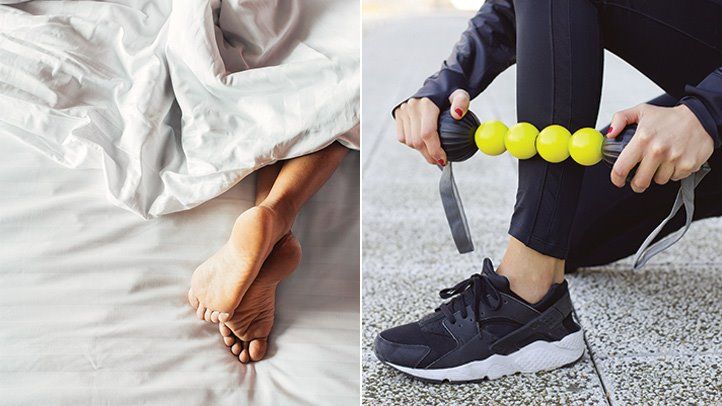 [3] Несмотря на то, что установлено, что DOMS возникает в основном из EECs, точный внутренний механизм возникновения этой боли все еще остается предметом дискуссий. Некоторые теории приписывают эту болезненность накоплению молочной кислоты, повреждению тканей или мышц, мышечным спазмам или воспалению; но скорее всего это комбинация. [3]
[3] Несмотря на то, что установлено, что DOMS возникает в основном из EECs, точный внутренний механизм возникновения этой боли все еще остается предметом дискуссий. Некоторые теории приписывают эту болезненность накоплению молочной кислоты, повреждению тканей или мышц, мышечным спазмам или воспалению; но скорее всего это комбинация. [3]
В то время как DOMS часто может пройти сам по себе во время отдыха, многие люди, особенно спортсмены, хотят ускорить этот процесс. И они делают это, пытаясь блокировать воспаление. Но острое воспаление, вызванное физическими упражнениями, на самом деле необходимо организму для восстановления и роста мышц, и блокирование или задержка этого процесса может затормозить восстановление и рост мышц.
Воспаление – это естественная защитная иммунная реакция организма на болезнь или травму в организме. [5] Во время интенсивных упражнений мышечные волокна и клетки повреждаются, что провоцирует воспалительный процесс. Это воспаление помогает организму восстановить поврежденную мышцу за счет увеличения притока крови к области, удаления клеточного мусора или отходов из пораженной области, пополнения кислорода и обеспечения мышц топливом.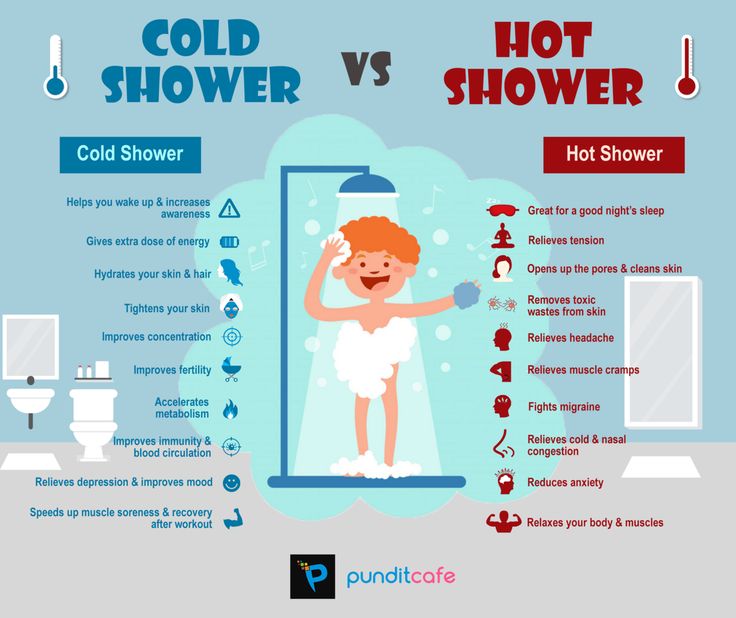 [5] Этот процесс часто вызывает отек, боль, покраснение и жар в месте повреждения.
[5] Этот процесс часто вызывает отек, боль, покраснение и жар в месте повреждения.
Это неудобно, но это острое воспаление необходимо для того, чтобы мышцы восстанавливались и становились сильнее. Цель должна состоять не в том, чтобы полностью заблокировать воспаление, а в том, чтобы как можно скорее взять его под контроль.
Нестероидные противовоспалительные препараты (НПВП) — это безрецептурные препараты, такие как ибупрофен, аспирин, напроксен и диклофенак, которые часто используются спортсменами. Они работают, блокируя определенные ферменты (ЦОГ-2), которые инициируют воспалительную реакцию организма. [6] Это помогает уменьшить боль и отек, связанные с болезненностью мышц, но это также означает, что пораженные мышцы не получают дополнительного притока крови, кислорода, питательных веществ и бригады по очистке мусора.
Обзор научной литературы по НПВП и показателям спортивных результатов, таким как максимальная работоспособность и самооценка боли, показал, что по этим показателям не было существенных различий между группами НПВП и контрольными группами. [7] Хотя это исследование все еще развивается, в настоящее время нет очевидных доказательств того, что НПВП обеспечивают повышение работоспособности или даже значительное облегчение боли в некоторых ситуациях. И небольшое исследование показывает, что большая доза НПВП ослабляет прирост мышечной массы от тренировок с отягощениями.
[7] Хотя это исследование все еще развивается, в настоящее время нет очевидных доказательств того, что НПВП обеспечивают повышение работоспособности или даже значительное облегчение боли в некоторых ситуациях. И небольшое исследование показывает, что большая доза НПВП ослабляет прирост мышечной массы от тренировок с отягощениями.
Рандомизированное контролируемое исследование, опубликованное в 2017 году, изучало влияние ежедневной высокой дозы ибупрофена (1200 мг — безопасная 24-часовая доза) или низкой дозы аспирина (75 мг) в течение восьми недель у здоровых взрослых, проходящих тренировку с отягощениями. [8] Исследователи измеряли объем и силу мышц участников, а также маркеры воспаления в начале и в конце исследования. Результаты показали, что в конце исследования объем мышц был в два раза больше у тех, кто принимал низкую дозу аспирина, по сравнению с высокой дозой ибупрофена.
Ограничения этого исследования включают небольшой размер выборки, отсутствие контрольной группы (также известной как группа, которая не получала лекарств, но все же участвовала в тренировках с отягощениями) и сравнение двух доз двух разных лекарств. Но это исследование действительно предоставляет доказательства того, что следует избегать постоянно высокого потребления НПВП для роста мышц.
Но это исследование действительно предоставляет доказательства того, что следует избегать постоянно высокого потребления НПВП для роста мышц.
Ключевой вывод: Использование НПВП при периодической болезненности мышц безопасно и может обеспечить некоторое облегчение боли, но постоянный прием НПВП, по-видимому, не улучшает показатели спортивных результатов. Фактически, постоянные высокие дозы НПВП могут даже подавлять рост мышц.
Обледенение воспаленных мышц или холодные ванны препятствуют воспалительной реакции организма. Лед вызывает сужение кровеносных сосудов, ограничивая приток крови и медиаторов воспалительного процесса к обрабатываемой области. Но этот холод и сжатие могут быть эффективными для облегчения мышечной боли, отека и жара в пораженных мышцах. Так что да, они могут помочь успокоить и уменьшить боль, вызванную физическими упражнениями, для кратковременного восстановления, например, между матчами или в дни соревнований. Тем не менее, может быть лучше регулярно не прикладывать лед в качестве профилактической меры от боли, чтобы максимизировать результаты тренировок.
В исследовании, проведенном в 2013 году, изучалось влияние холодных компрессов после тренировки мышц рук по сравнению с отсутствием льда. [9] Результаты показали, что у тех, кто тренировался со льдом, субъективная усталость была выше через три дня, а показатели крови указывали на замедленное восстановление по сравнению с теми, кто тренировался без льда. Исследование 2017 года показало, что погружение в холодную воду было не более эффективным, чем стандартное активное восстановление (разминка) после силовых упражнений.
Несколько недавних небольших исследований и исследований на животных даже показали, что обледенение после тренировки приводит к меньшему увеличению мышечного объема и снижению силы после тренировки по сравнению с отсутствием обледенения.[9],10] Подробнее о лечении холодом и сауной читайте здесь.
Ключевой вывод: Погружение в лед и холодную воду может быть ценным краткосрочным средством восстановления между событиями, но не является полезным в качестве превентивной или осторожной практики и может даже помешать полезной адаптации мышц после упражнений.
*Острое воспаление необходимо для восстановления мышц. Однако при травмах и в ситуациях, когда это воспаление может принести больше вреда, чем пользы, НПВП и лед могут быть полезны для контроля этого воспаления. Поговорите со своим поставщиком медицинских услуг для получения дополнительной информации.
Активное восстановление
Нет ничего лучше, чем вернуться к основам: найдите время после тренировки для активного восстановления. Упражнения увеличивают приток крови к рабочей зоне, что полезно для запуска процесса восстановления. Фактически, исследования показывают, что активное восстановление в течение 20 минут после упражнения с использованием утомленных мышц более эффективно снижает DOMS по сравнению с работой других групп мышц.[11] Например, если вы тренируетесь до усталости, эффективным активным восстановлением может быть езда на велосипеде с меньшей интенсивностью в течение 20 минут.
Обзор, включающий 99 исследований, показал значительное снижение DOMS у спортсменов, принимавших участие в активных методах восстановления.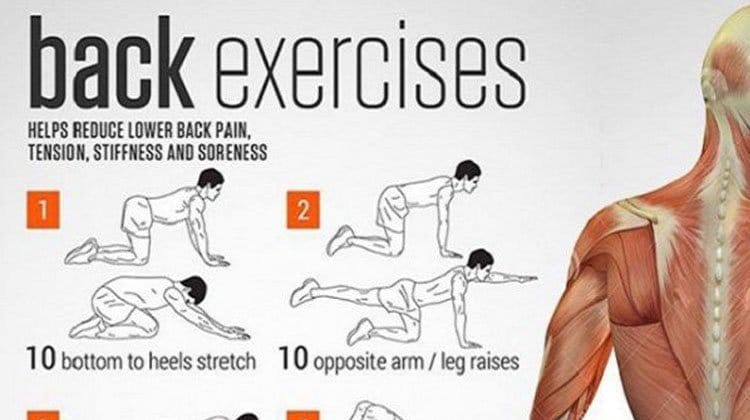 Лучшие методы восстановления зависят от вида спорта и спортсмена, но правильное активное восстановление должно помочь мышцам чувствовать себя более отдохнувшими для следующей тренировки и помочь спортсмену избежать травм.
Лучшие методы восстановления зависят от вида спорта и спортсмена, но правильное активное восстановление должно помочь мышцам чувствовать себя более отдохнувшими для следующей тренировки и помочь спортсмену избежать травм.
Добавки с рыбьим жиром
Исследования показывают, что прием добавок с рыбьим жиром, богатых омега-3 жирными кислотами ДГК и ЭПК, может уменьшить мышечную болезненность и улучшить показатели восстановления мышц, например диапазон движений. Вероятно, это связано с положительным влиянием этих жирных кислот на воспалительные и иммунные процессы.[1,2,12]
Однако оптимальная доза этой добавки пока не определена. Семинедельное рандомизированное контролируемое исследование показало, что 6 г добавки с рыбьим жиром снижают болезненность после упражнений по сравнению с более низкими дозами 2 г или 4 г в день. [1] Тем не менее, другие исследования показали, что добавки с рыбьим жиром в количестве примерно 1 или 2 г в день все же могут быть полезны при воспринимаемой боли после тренировки.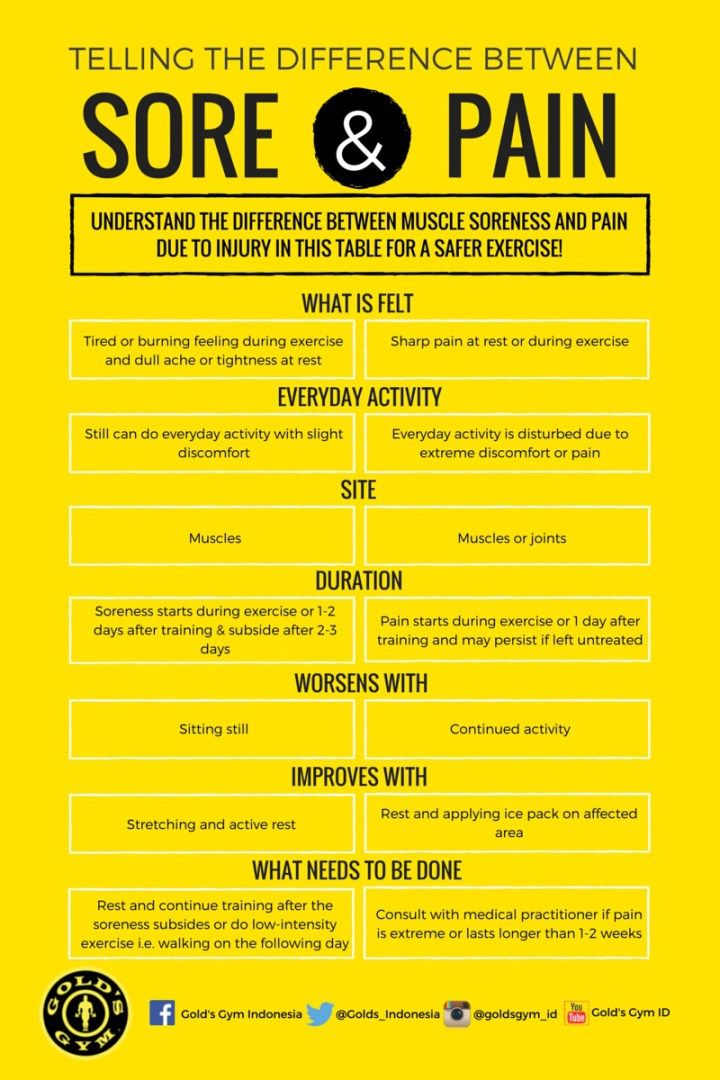 ты. И ознакомьтесь с этой статьей о пользе рыбьего жира для здоровья сердца.
ты. И ознакомьтесь с этой статьей о пользе рыбьего жира для здоровья сердца.
Коллагеновые добавки
Коллаген — это тип белка, который поддерживает соединительные ткани (включая сухожилия и связки). Коллагеновые добавки, часто продаваемые в виде порошков, уменьшают боль в суставах у спортсменов как во время физической активности, так и в состоянии покоя.
Отдельные исследования показывают, что режимы приема 5 г пептидов коллагена в день в течение 12 недель и 10 г гидролизата коллагена в день в течение 24 недель являются жизнеспособными вариантами для значительного улучшения показателей боли в суставах. [13,14] Добавки коллагена могут быть эффективными. принимать в любое время дня, до или после тренировки.
Добавки куркумина
Куркумин является основным активным соединением куркумы и оказывает антиоксидантное и противовоспалительное действие на организм. Систематический обзор 11 исследований показал, что добавление куркумина в дозе 150-1500 мг в день уменьшает воспринимаемую мышечную боль и мышечное повреждение, одновременно повышая мышечную работоспособность. [15] Исследователи пришли к выводу, что куркумин играет важную роль в контроле воспаления и распада белка, связанного с повреждением мышц. Узнайте больше о влиянии куркумина на воспаление здесь.
[15] Исследователи пришли к выводу, что куркумин играет важную роль в контроле воспаления и распада белка, связанного с повреждением мышц. Узнайте больше о влиянии куркумина на воспаление здесь.
Прокатывание пены
Это метод самообмена сообщениями, используемый для воздействия на фасцию , соединительную ткань вокруг мышц. Прокатывание пеной может привести к фасции крови, насыщенной кислородом, и помочь уменьшить ощущение мышечной боли. Это также можно делать с помощью теннисных мячей, мячей для лакросса или массажных палочек.
Несмотря на то, что это хорошо принятая техника среди спортсменов и тренеров, научная литература о роликах из пенопласта все еще появляется. Хотя некоторые исследования показали, что это действительно улучшает диапазон движений и индексы боли, другие не показывают значительного эффекта. В любом случае, прокатка пены, как правило, безопасна для практики. Чтобы получить максимальную пользу, раскатывайте уставшие мышцы в течение 20 минут после тренировки.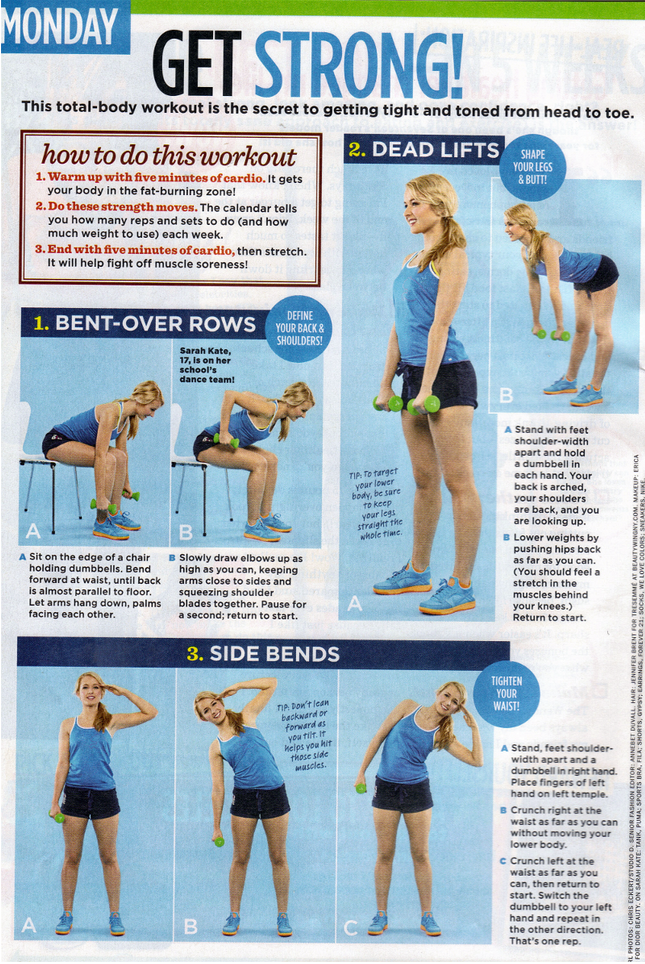
- Упражнения вызывают острое воспаление, необходимое для восстановления и роста мышц.
- НПВП, такие как ибупрофен, предназначены для блокирования этого воспаления, и, хотя они безопасны для периодического облегчения, постоянное использование не приносит пользы спортсменам или росту мышц.
- Погружения в лед и холодную воду неэффективны в качестве превентивной меры уменьшения мышечной боли, но могут быть полезны в качестве краткосрочного метода восстановления.
- Методы активного восстановления и самомассажа, такие как массаж пены, увеличивают приток крови к утомленным мышцам и могут помочь облегчить симптомы DOMS.
- Добавки рыбьего жира, коллагена и куркумина уменьшают боль у спортсменов.
Молли Кнудсен, MS, RDN
Молли — автор контента и специалист по питанию в InsideTracker. Как зарегистрированный диетолог, Молли любит связывать людей с пищей, которую они едят, и с тем, как это влияет на их биомаркеры.
